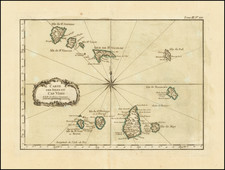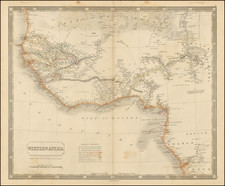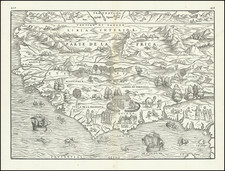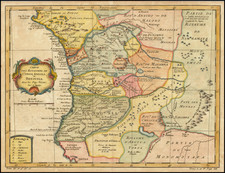The Slave Fortress at Fort Saint Louis.
Fine old color example of Raspe's map of the lower Senegal River, with plan of the Slave trading factory at Fort Saint-Louis and map of Saint-Louis Island, from his Schauplatz des Gegenwaertigen Kriegs . . .
The map was prepared following the conclusion of the Seven Year War, when the British captured Senegal and Fort Saint-Louis.
Saint-Louis Island, Senegal
A Wolof settlement at what is now known as Guet Ndar dates from around 1450 and was a meeting and departure point for Muslim pilgrims traveling to Mecca in Arabia. Portuguese, Dutch, and English traders visited the area over the next two centuries but the first nearby colonial fortification was erected by the French in 1638 on Bocas Island.
Repeated flooding prompted the removal of the fort to the island known to locals as Ndar in 1659. The island was uninhabited at the time, supposedly because the local people believed it to be haunted by spirits. The Diagne of Sor, the local leader, permitted French settlement on the island for annual payments of "three pieces of blue cloth, a measure of scarlet cloth, seven long iron bars, and 10 pints of eau de vie."
The fortification permitted a French factory to command foreign trade along the Senegal River. Slaves, hides, beeswax, ambergris and, later, gum Arabic were exported. During the Seven Years' War, British forces captured Senegal in 1758. In February 1779, French forces recaptured Saint-Louis. In the late 18th century, Saint-Louis had about 5,000 inhabitants, not counting an indeterminate number of slaves in transit.
Between 1659 and 1779, nine chartered companies succeeded one another in administering Saint-Louis. As in Gorée, a Franco-African Creole, or Métis, merchant community characterized by the famous "signares", or bourgeois women entrepreneurs, grew up in Saint-Louis during the 17th and 18th centuries.












![X. b [Congo]](https://storage.googleapis.com/raremaps/img/small/93299.jpg)

